Nobody Can Figure Out The Answer to This Math Problem
Next time you have a math assignment, you may not want to take to the internet to get it figured out because if it’s one thing we know, it’s that people cannot be trusted to do math.
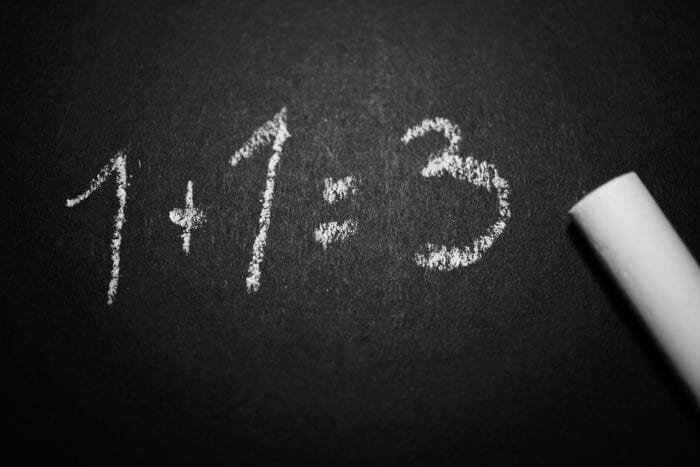
Once again, Nobody Can Figure Out The Answer to This Math Problem and it has the whole internet divided.
The math problem is:
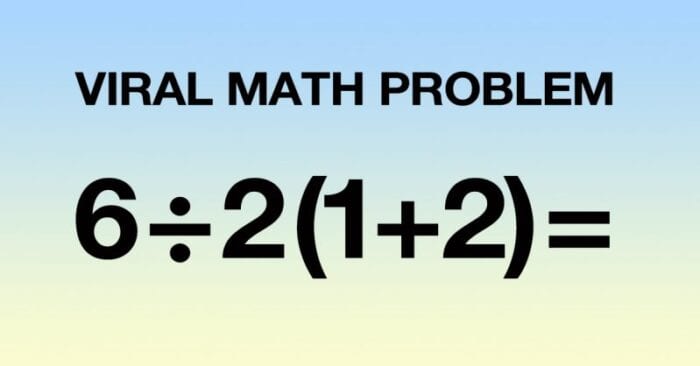
6/2 (1 + 2) = ?

Some are quick to jump in saying you need to go in the order of PEMDAS (Please Excuse My Dear Aunt Sally) like many of us were taught in grade school.
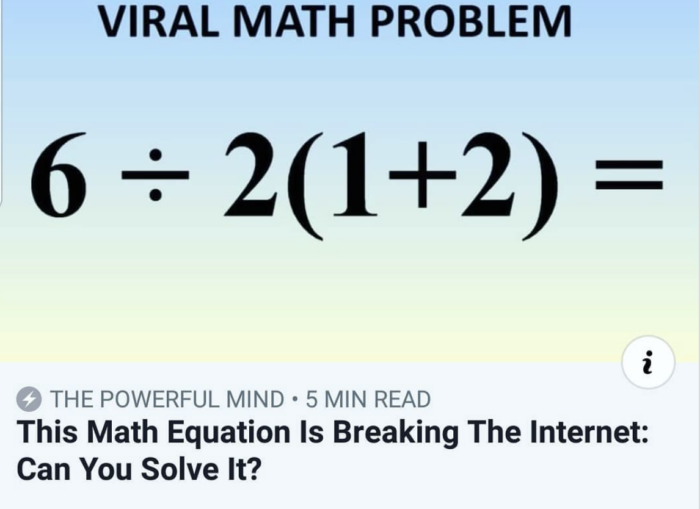
Others, disagree and say it’s acronyms BODMAS to follow.
Either way, most people are coming up with the answers 0, 1, 3, or 6 which are presumably wrong.

Why?
Because the answer is actually 9.
Here is an overly complicated breakdown of the equation:
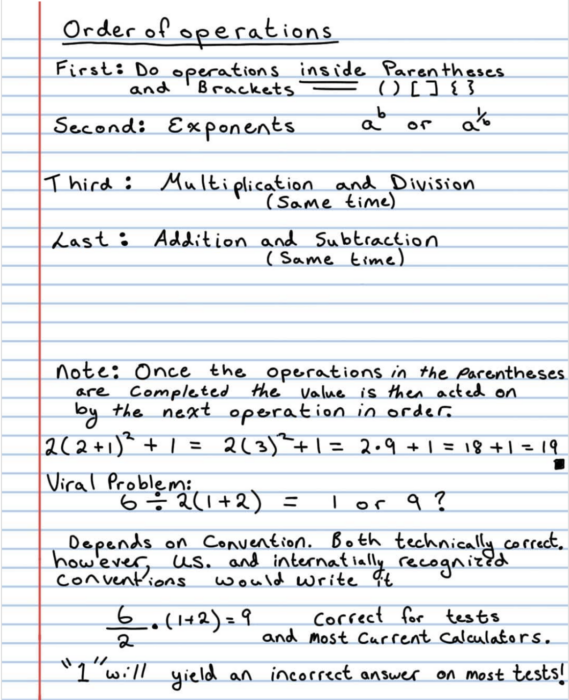
But to dumb it down for those (like me) that have math as their weakest subject, here is a YouTube video going over the equation:
So yeah, technically the answer is 9 but can also be 1? I am more confused now than when I started.
So, which is it? What is your answer?!
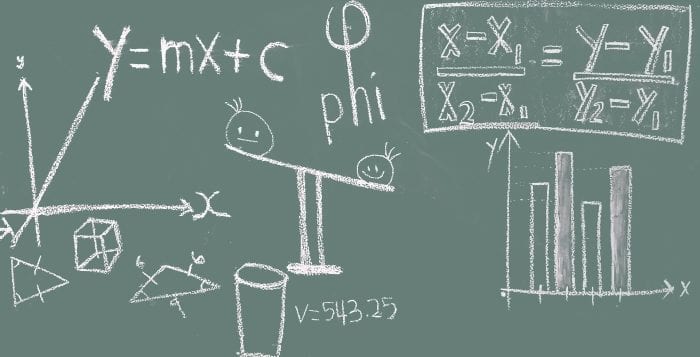







My answer is that this equation was deliberately written in the worst possible way with malice aforethought and the intent to confuse.
My answer is **** you, do a better job of writing your equations.
The correct answer is 1. Case closed.
This is why they made a scientific calculator to settle arguments over math problems. You can download one from app store or Google one. It’ll walk you through the math problem and give you the answer.
6÷2(1+2)
6÷2(3)
3(3)
9
@tink,No where does it say to multiply except for the 2(3) and that is 6 and then 6 divided by 6 is 1. Obviously you did not do will in math or in algebra. Your last 2 steps are wrong and NO where can you just change the numbers to suit you.
No idea what PEMDAS is but it will teach your children the wrong way to work math. “New math” just screws the students up IHMO.
@Theresa L Bernal, it’s the order of operations we were all talk:
Parenthesis
Exponents
Multiply
Divide
Add
Subtract
@tink, oh now I see it. You have to complete the division not multi but I that you multiplay befor divide????
@tink, yes this is the way I was taught
@tink, EXACTLY. It’s 9… this argument is for people that don’t know how to do math because only they don’t know how to solve such a simple equation. People never learned PEMDAS and it shows. Wow.
@MathWiz, right… answer is 9…
The answer is 9 because (2+1) = 3 then 6÷2=3 so 3×3=9
@Nicky, nope. The equation as written is 6 divided by 2(1+2) or 6/6.
If it was 6/2 x (1+2) there would have to be another multiplication sign. 2(1+2) is one expression in algebra. And everything is after the division sign implying it’s one expression as well.
@MathWiz, mathway says 1
@Devin Bohannon, when you do order of operations you work from left to right doing parenthesis then exponents, multiplying and dividing is like 1 step from left to right and the same goes for adding and subtraction
@Theresa L Bernal, I learned my new math in 1966. When you have division and multiplication in a problem they both have the same significance. Therefore you do them left to right. That is why after what is in the parentheses is solved, you must do the division first then the multiplication.
6 divided by 2 times (1+2)=
6 divided by 2 times (3)=
3 times (3)=
3(3)=9
This is precisely why there are order of operations in math so that everyone is supposed to do it the same way.
@Mari, preach!
@Tom, where did this idea of “same significance” come from?! I’m highly confused how the operations somehow “tie” with each other. If that was true, there probably couldn’t be an acronym that’s in a specific order….
@Ann, correct!
@MathWiz, But YOU didn’t do PEMDAS! You have to multiply first. I really don’t know where the idea of “same significance” ever came from. There’s a reason there is a specific order to PEMDAS.
I used PEMDAS, but you also have to use the left to right logic. Multiplication and division are the same priority in PEMDAS (really P, E, M/D, A/S). I get 9 using that method.
@Terri B,
Look at it this way
6/2(a+b) where a=1 and b=2
6/ (2a + 2b)
6/ (2(1) + 2(2))
6/ (2+4) = 6/6 = 1
The question asks “Can You Figure Out This Viral Math Problem? “Math” being the definitive. There is and has only ever been one way to solve Linear Mathematical equations. The rule has three alternate names, which are: BEDMAS; BODMAS; and PEMDAS. Hence the answer is 9. However, if it asked to figure out an Algebra problem, then the answer to the equation is 1.
This is why they made a scientific calculator to settle arguments over math problems. You can download one from app store or Google one. It’ll walk you through the math problem and give you the answer.
6÷2(1+2)
6÷2(3)
3(3)
9
9
There is one and only one answer:
6/2(1+2)
6/2(3)
3(3)
9
Okay, so let’s reverse engineer a couple equally plausible story problems from this very poorly formed equation, just to illustrate that it IS INDEED a poorly formed equation…
First Story Problem–two friends, Jim & Joe, each have one $2 bill and one $1 bill (2(1+2))… Together they have six dollars. They decide to split their money amongst six of their friends, so each friend gets $1 ((6÷6)).
Second Story Problem–Bob has $6 that he decides to split between two of his friends, Frick & Frack, giving $3 to each friend ((6÷2)). Because they’re good guys, Frick & Frack each take the $3 and add an additional $3 (2+1), and decide to pay it forward by giving all of the money to their sister for a total of $9.
Neither is wrong, neither is right. It’s a faulty equation, so stop arguing about which is correct. Good grief!
Except, the second story problem does not match the expression. That expression would have to be written as 2(6/2+1) = 2(3+1) = 2(4) = 8. So the sister would have $8, not $9. Where did the extra dollar come from?
6
————–
2(1+2)
=
6
——-
(2×1) + (2×2)
=
6
———-
2+4
=
6
——–
6
=1
I’ve never heard of a maths problem having two correct answers. It’s either one or the other and my answer is 1.
6
————–
2(1+2)
=
6
——-
(2×1) + (2×2)
=
6
———-
2+4
=
6
——–
6
=1
@Scholar, Why can’t it be:
6
—- x (1+2)
2
3 x (3) = 9
@Scholar, the answer is 9 because (2+1) = 3 then 6÷2=3 so 3×3=9
People forget the key part of the multiple and divide step. It isn’t always multiply, then divide. It’s multiply or divide, whichever comes first left to right.
6÷2(1+2)
6÷2(3) parenthesis
3(3) division comes first so divide
9. Then multiply
I will say this. This simplification problem is written in an unorthodox way, probably meant to trick people into doing it wrong and dying on their hill over it. Here’s a better way to represent the same problem:
6
—- (1 + 2)
2
You are not solving the parentheses before doing the division. You are only converting parentheses into division, otherwise rewriting 6/2x as 6/2*x. 6 over 2x does not equal 3x.
The correct answer is 1. If you use either order of operations it will be 1.
6/2(2+1)=
(2+1)=3
2(3)=6
6/6=1
That is the proper way to use the order of operations. Most calculators aren’t sufficient enough to solve equations like this. It can simply be done with mental math or using scrap paper.
I got one but nine could also be correct..
6/2(1+2)
(1+2)=3
2(3)= 6
6/6=1
Or
6/2(1+2)
2(1+2)
(2+4)=6
6/6 =1
Or
6/2(1+2)
6/2=3
3(1+2)
3(3)=9
Your solving for an equation so if you take the third route you would have to solve for x not just move the 3 over. 6/2=3x and then 3=3x and last solve for x so x= 3/3 or 1. It will never be 9….
You don’t do multiplication before division if the division is further left in an equation. After you solve the (1+2), that gets left until it comes up in the line. The division gets done first. That’s how math works.
6/2(1+2)
6/2(3)
3(3)
9
This is the ONLY correct answer, and the simplest way to solve it.
@James, only one answer can be correct and its 9 because (2+1) = 3 then 6÷2=3 so 3×3=9
9
PEMDAS and BODMAS are the exact same thing…. just worded differently. If you follow either one, the answer would be 1.
Parenthesis Exponents, Multiplication, Division, Addition, subtraction.
Brackets (same as parenthesis), Orders (any number with powers or square roots, aka exponents), Division, Multiplication, Addition, Subtraction. The answer is not 9. If you get 9 you are not doing the math properly. Follow the order.
But it is 9… 6/2(1+2)=6/2(3)=3(3)=9
Have you ever taken Algebra cause if you had you wouldn’t be doing well on your test. The only correct answer is 9. Unless elementary, high school and both colleges I attended taught me incorrectly.
This is why they made a scientific calculator to settle arguments over math problems. You can download one from app store or Google one. It’ll walk you through the math problem and give you the answer.
6÷2(1+2)
6÷2(3)
3(3)
9
Calculators only solve it as 9 because it’s written incorrectly by simply replacing the division symbol with a slash and changing the expression. Simply substituting the slash for the division symbol makes it appear to be 6/2 times 1+2 not 6 divided by 2(1+2). This is why computer programmers have to be careful about how they transpose equations into code. If you solve parentheses by first using the distributive property of multiplication to change 2(1+2) to (2*1+2*2) you get 6/(2+4) or 6/6=1.
6/2(1+2)
(3)
6/2(3)
(6)
6/(6)
Answer: 1
You only do what’s in parentheses first… So 2(3) does not get done before 6/2
6➗2(1+2)
3(1+2)
3(3)=9?
You’re supposed to do the parentheses First…..
Parentheses first , multiplication and divisions second left to right. Not multiplication than division. You do them left to right…
You only do what’s in parentheses first… So 2(3) is treated as 2*3 so you do 6/2 first
You’re not solving parentheses by simply converting it to multiplication. Does 2(pi)r equal 2*pi*r ?
Sorry, meant to write 6 divided by 2(pi)r versus 6/2*pi*r.
@David, Yes, 2(pi)r DOES equal 2*pi*r. Of course it does. What else would it possibly equal? Seriously, you have absolutely no clue what you are talking about.
Zero
6/2(1+2)
Distributive property
6/2+2+4
6/2=3
3+2+4=9
@Janell,
That’s not how the distributive property works. When you distribute the 2 into the parentheses, 2+4 stays in the parentheses and the first 2 goes away because it has been distributed. So it looks more like this.
6/2(1+2)
6/(2+4)
6/6
People keep forgetting the distributive property or simply using it wrong. You remembered it, but used it incorrectly. The answer is 1.
1 because I did distribute property first then divide
It is 1.
There are zero exponents in the equation to make the answer 9…lol smh
….there isnt a need for exponents to make it 9 though.
What? Do you have any idea what you are even talking about. Having no exponents in this equation has nothing to do with the correct answer being 9. I really hope your being sarcastic!
You should shake your head, maybe your neurons will activate and let you see how dumb your answer was lol
9
6\2 (3) =
3(3)=9
9
7
6*1/2*(2+1)=9
1
6/2(1+2)=
(1+2) = 3
6/2=3
3(3)=9
@Alivia, Don’t understand the intentional confusion to a rather simple math statement. It probably just frightens and turns people off who might still be learning. The nice thing about math is that there in only one answer. We never give 2 or more ‘suggestions’. If you have more than one way to interpret an answer, then use more guidance to make it precise.